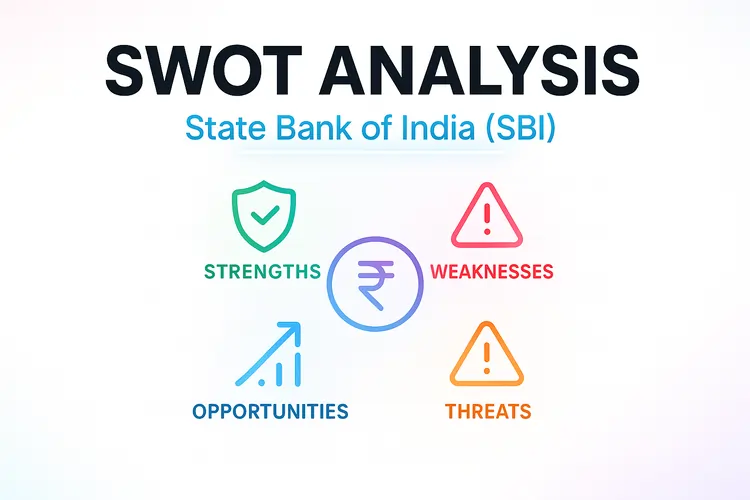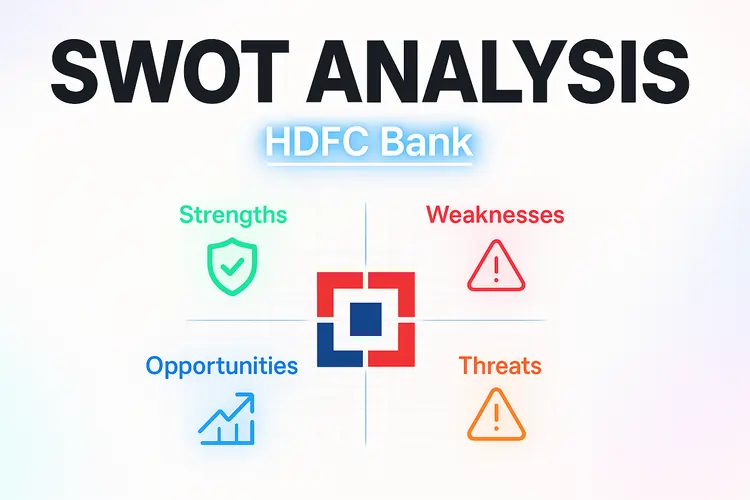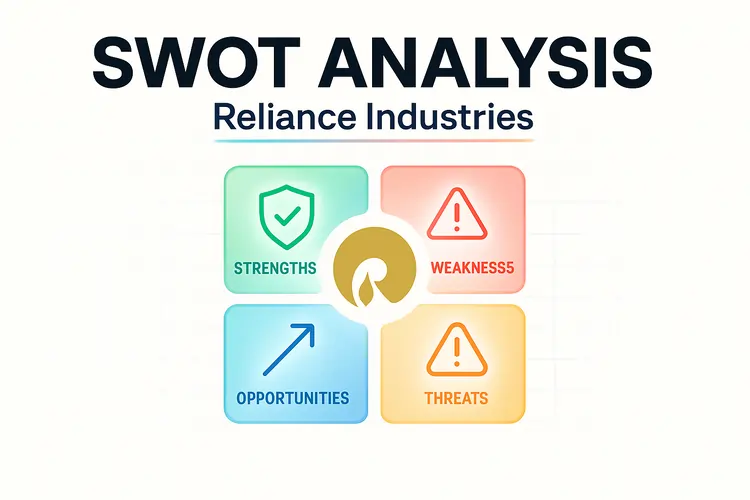
Reliance Industries Limited (RIL) is India’s most valuable conglomerate, led by Mukesh Ambani, with operations across telecom, retail, refining, petrochemicals, media, and new energy. The company reported revenues above ₹3.3 lakh crore in FY25, making it the largest enterprise by market capitalization in India.
Reliance Jio dominates the telecom sector with over 498 million subscribers and rapid 5G adoption, while Reliance Retail has become the nation’s largest retailer by revenue. The recent Disney India merger also positioned Reliance as the biggest force in Indian broadcasting and streaming.
Beyond its consumer-facing businesses, Reliance is investing heavily in the future. The Jamnagar complex is being transformed into a clean energy hub with a battery gigafactory and solar manufacturing capacity to support India’s renewable energy ambitions.
As someone who has trained over 1 Lakh students in digital strategy and worked with Indian businesses at scale, I, Deepak Singh, Founder of The DM School, bring a practical lens to this Reliance SWOT analysis 2025. The goal is to simplify what makes Reliance strong, where it struggles, and how its future could unfold.
This SWOT analysis explores Reliance’s strengths, weaknesses, opportunities, and threats in detail. For comparison, you can also read Dmart’s SWOT analysis, which highlights a very different approach to scale in Indian retail.
Strengths of Reliance Industries
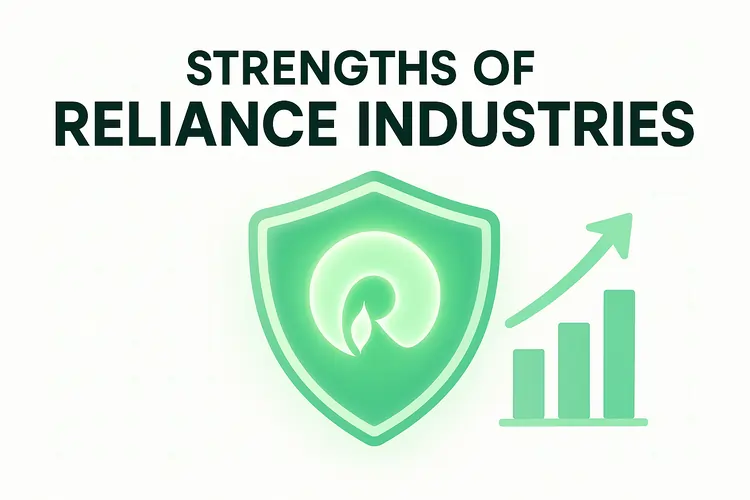
The strengths of Reliance Industries explain why it is not just India’s largest company, but also the backbone of India’s modern economy.
Reliance has built dominance in multiple sectors — telecom, retail, energy, and media — while also preparing for a green energy future.
This combination of scale, vision, and execution makes Reliance Industries a one-of-a-kind business empire.
- Telecom Leadership with Jio: Over 498 million subscribers, fastest 5G rollout, and JioAirFiber expansion give Reliance unmatched digital reach in India.
- Retail Powerhouse: Reliance Retail revenue crossed ₹3.3 lakh crore in FY25, covering groceries, lifestyle, FMCG, and e-commerce. It is India’s biggest retailer.
- Energy Backbone: World-class refining and petrochemical operations at Jamnagar provide steady cash flows and global cost competitiveness.
- Media Supremacy: The Disney India merger created the largest entertainment and sports network, combining Hotstar, JioCinema, and 120+ TV channels.
- Financial Strength: Reliance consistently raises billions, executes mega-projects, and enjoys investor confidence unmatched by most Indian companies.
- Innovation and Future-Readiness: Investments in battery gigafactories, solar manufacturing, and consumer digital platforms position Reliance for long-term leadership.
Reliance Industries strengths mirror the principles of scale and efficiency used by India’s best Facebook Ads agencies to dominate their markets.
Summary: Reliance Industries strengths lie in its telecom dominance, retail leadership, energy backbone, media scale, financial power, and future-ready innovations.
Weaknesses of Reliance Industries
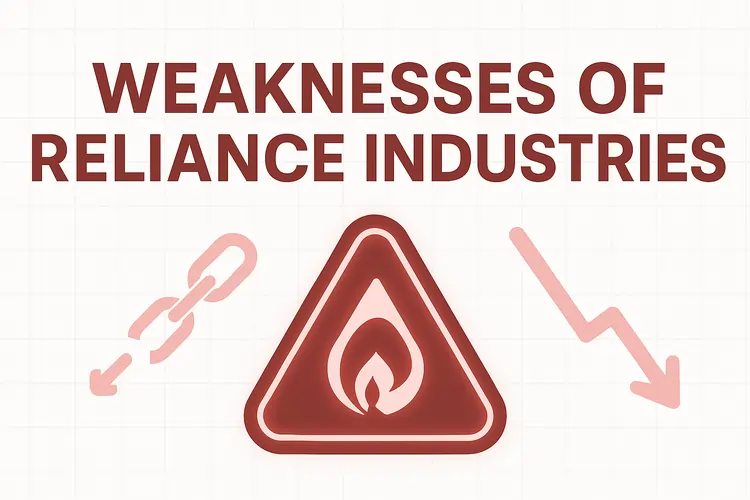
The weaknesses of Reliance Industries reveal the hidden cracks behind its massive empire. Even India’s biggest conglomerate faces structural challenges.
These weaknesses show that scale alone cannot protect Reliance from financial pressure, execution risks, and regulatory scrutiny.
Understanding them is vital for investors, competitors, and policymakers tracking Reliance’s future trajectory.
- High Capital Intensity: Reliance invests billions in telecom, retail, and green energy. Such projects need long gestation periods and heavy funding.
- Dependence on Cyclical Energy: Refining and petrochemicals remain vulnerable to global oil prices and demand fluctuations, affecting profits during downturns.
- Retail Profitability Pressure: Despite scale, Reliance Retail margins remain lower than global benchmarks like Walmart and Amazon due to fierce competition.
- Regulatory Scrutiny: Telecom, retail, and media businesses operate under constant oversight. Any adverse policy could directly hit growth plans.
- Execution Risks: Mega-projects like the Jamnagar gigafactory or Disney integration may face delays, cost overruns, or integration challenges.
- Debt and Leverage: Though managed well, Reliance’s aggressive expansion has increased leverage compared to peers, creating potential long-term financial strain.
These Reliance Industries weaknesses reflect the same growth challenges many businesses face, as taught inside The DM School.
Summary: Reliance weaknesses include capital-heavy projects, cyclical energy dependence, retail margin pressure, regulatory risks, and execution challenges.
Opportunities for Reliance Industries
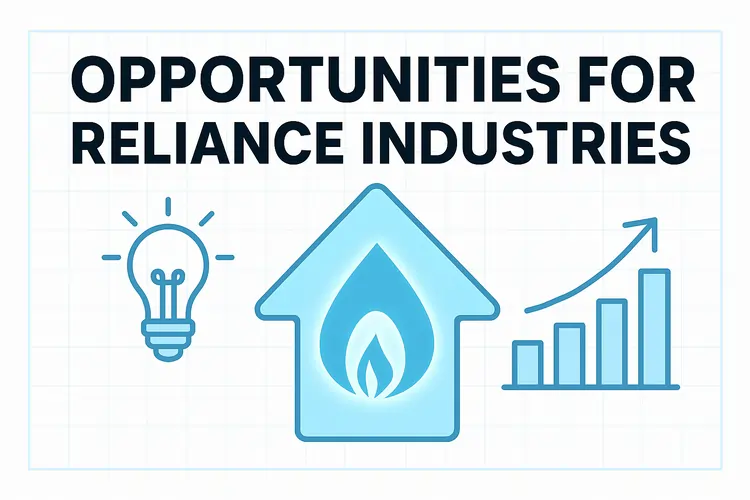
The opportunities for Reliance Industries are massive, fueled by India’s digital expansion, rising consumption, and renewable energy shift.
With unmatched reach, Reliance is positioned to capture growth in telecom, retail, green energy, and global media influence.
These opportunities could define Reliance’s role in shaping India’s economy over the next decade.
- 5G and Digital Growth: Jio’s 5G rollout and JioAirFiber expansion boost ARPU and strengthen Reliance’s digital ecosystem.
- Retail Expansion: Rising middle-class income fuels Reliance Retail growth across groceries, FMCG, fashion, and quick commerce platforms.
- Media Synergies: Disney India merger creates unmatched cross-platform advertising, sports broadcasting, and OTT bundling opportunities.
- Green Energy Transition: Jamnagar gigafactory and solar hub projects position Reliance as a global leader in renewables.
- IPO Value Unlock: Future listings of Jio Platforms or Reliance Retail could unlock massive shareholder wealth.
- Global Expansion: Reliance’s partnerships and acquisitions open doors to international markets beyond India.
Reliance opportunities highlight how scale creates new markets, much like YouTube Ads in India unlocked growth for digital-first brands.
Summary: Reliance Industries opportunities lie in 5G growth, retail expansion, media synergies, renewable energy, and IPO-driven value creation.
Threats to Reliance Industries
The threats for Reliance Industries remind us that even India’s largest company is not immune to external risks.
Global volatility, fierce competition, and regulatory changes constantly test Reliance’s ability to protect its empire.
These threats highlight the challenges Reliance must manage to sustain growth and investor confidence.
- Telecom Price Wars: Aggressive competition from Airtel and Vodafone Idea can reduce Jio’s ARPU and profitability.
- Energy Volatility: Refining and petrochemical profits remain tied to unpredictable global crude cycles and demand shifts.
- Retail Competition: Dmart, Amazon, and Flipkart challenge Reliance Retail with price pressure and strong customer loyalty.
- Media Cost Pressure: Rising content and sports broadcasting rights inflate expenses, straining Reliance’s media profitability.
- Execution Risks: Large-scale projects like Jamnagar gigafactory may face delays, overruns, or operational challenges.
- Regulatory Challenges: Policy shifts in telecom, retail, or data privacy could directly impact Reliance’s expansion plans.
Reliance threats mirror the unpredictability of algorithm shifts, similar to challenges in YouTube SEO in India.
Summary: Reliance Industries threats include telecom price wars, energy volatility, retail competition, regulatory changes, and execution delays in mega projects.
Reliance Industries: Key Metrics Snapshot
| Metric | Value | Period |
|---|---|---|
| Jio subscribers | 500+ million | AGM 2025 |
| 5G users (Jio) | ~213 million | End-Jun 2025 |
| Jio ARPU | ₹208.8 | Q1 FY26 |
| Retail revenue | ₹73,720 cr (ops) / ₹84,171 cr (gross) | Q1 FY26 |
| RIL net profit | ₹26,994 crore | Q1 FY26 |
| Consolidated EBITDA | ₹58,024 crore | Q1 FY26 |
| Media merger | Reliance + Disney India | Completed |
| New energy projects | Battery gigafactory, solar hub | Jamnagar |
Telecom momentum
High
Retail momentum
High
Energy momentum
Medium
Media momentum
Medium
New energy momentum
Emerging
Conclusion of Reliance Industries SWOT Analysis 2025
The SWOT analysis of Reliance Industries shows why it remains India’s most dominant and diversified conglomerate.
Strengths in telecom, retail, and energy give Reliance unmatched scale, while media and green energy ensure future relevance.
Weaknesses like high capital intensity and dependence on cyclical sectors highlight the challenges of managing such a vast empire.
Opportunities in 5G, retail growth, renewables, and IPOs can redefine Reliance’s global position over the next decade.
Threats from competition, regulation, and project execution risks remind us that even market leaders must stay adaptive.
As Deepak Singh, Founder of The DM School, I see Reliance as a case study in scale, diversification, and bold vision. For businesses seeking growth insights, The DM School offers proven frameworks to build resilience and expansion strategies.
Summary: Reliance Industries remains India’s most powerful company, balancing massive opportunities with equally significant risks.
Reliance Industries SWOT – FAQs
What are Reliance Industries’ CSR activities?
CSR is driven by Reliance Foundation. Focus areas include healthcare, education, rural transformation, women empowerment, environment, and disaster response.
Is Reliance Industries listed on the stock market?
Yes. Reliance Industries trades on NSE and BSE with the ticker RIL. Liquidity and analyst coverage are among the highest in India.
Who is the owner of Reliance Industries?
Mukesh Ambani is Chairman and Managing Director. The company was founded by Dhirubhai Ambani and is widely held by investors.
What are the key subsidiaries of Reliance Industries?
Major subsidiaries include Jio Platforms, Reliance Retail Ventures, Network18 media assets, and multiple energy and infrastructure entities.
What is the net worth or market cap of Reliance Industries?
Reliance Industries is India’s most valuable listed company by market capitalization. Exact value changes with market conditions.
Where can I read Reliance Industries news?
Use company filings and releases. Also track Economic Times, Business Standard, Moneycontrol, Bloomberg, and exchange announcements.
What products and services does Reliance Industries offer?
O2C fuels and petrochemicals, Jio telecom and broadband, retail formats and FMCG, media and OTT, and upcoming clean energy solutions.
What is Reliance Jio’s role in the group?
Jio is the digital engine. It drives subscriber growth, ARPU expansion, fixed wireless broadband, and cross-bundling with media.
What makes Reliance Retail important?
It is India’s largest retailer by revenue, with formats across grocery, fashion, lifestyle, electronics, e-commerce, and FMCG brands.
How does the Disney India merger impact Reliance?
It creates a scale leader in TV and streaming. Synergies include sports rights, OTT bundling, ad sales, and cross-platform distribution.
What are Reliance’s new energy plans?
Integrated solar manufacturing and battery gigafactory initiatives at Jamnagar support India’s clean energy transition over the long term.
Does Reliance Industries pay dividends?
Yes. Payouts depend on profits, capex needs, and board approval. Dividend history reflects steady shareholder returns.
Who are Reliance Industries’ main competitors?
Airtel and Vodafone Idea in telecom; D-Mart, Amazon, Flipkart in retail; global and domestic players across energy and media.
What are the key risks for Reliance Industries?
Telecom price pressure, energy margin volatility, high capex execution, content costs, and regulatory or antitrust interventions.
How strong is corporate governance at Reliance Industries?
Reliance follows board-led governance with audit and risk committees. Investors track disclosures, related-party controls, and capital allocation.
What about leadership succession at Reliance?
Succession planning has been communicated publicly. Leadership responsibilities are increasingly distributed across next-generation executives.
Where is Reliance Industries headquartered?
Mumbai, India. Key campuses include the Dhirubhai Ambani Knowledge City and the Jamnagar energy complex in Gujarat.
When was Reliance Industries founded?
It began in 1966 under Dhirubhai Ambani as a textile venture, then diversified into energy, telecom, retail, and media.
How many employees does Reliance Industries have?
Reliance employs several hundred thousand people across energy, digital, retail, media, and new energy businesses in India and abroad.
How can I invest in Reliance Industries?
Open a demat and trading account with a SEBI-registered broker. Study disclosures and risk factors before buying RIL shares.
What is the future outlook for Reliance Industries?
Growth depends on 5G monetization, retail expansion, media integration, and execution of clean energy manufacturing at scale.
Why is a SWOT analysis useful for Reliance?
It condenses complex businesses into strengths, weaknesses, opportunities, and threats. It guides decisions for investors and managers.

